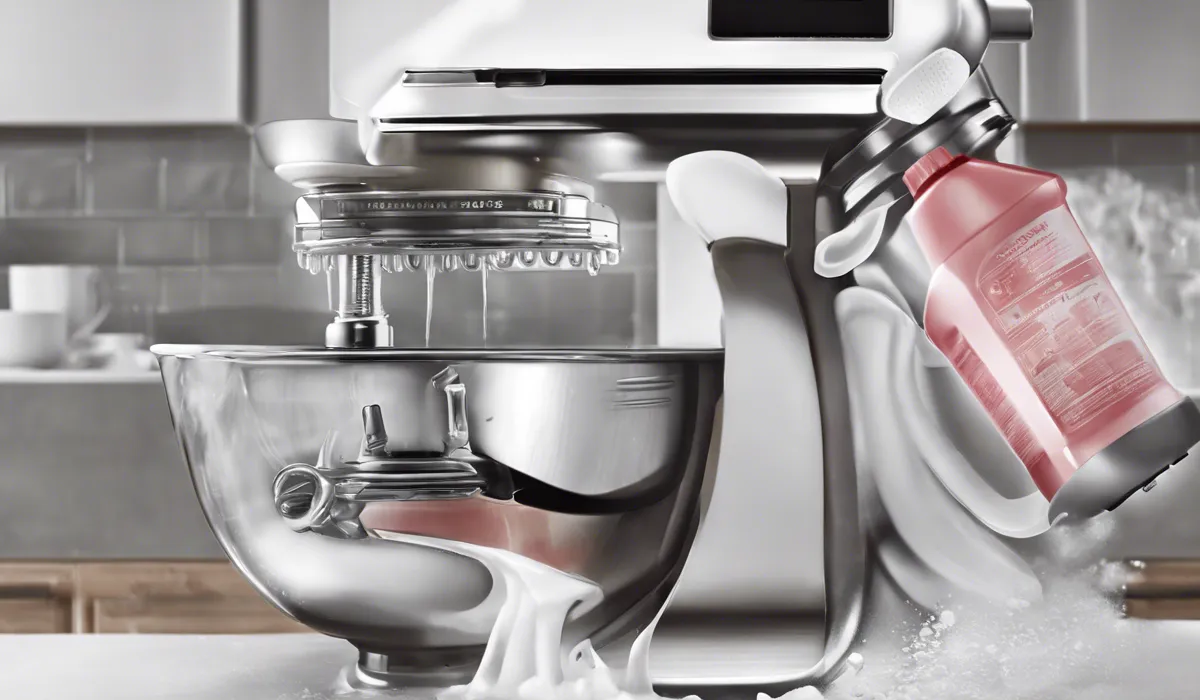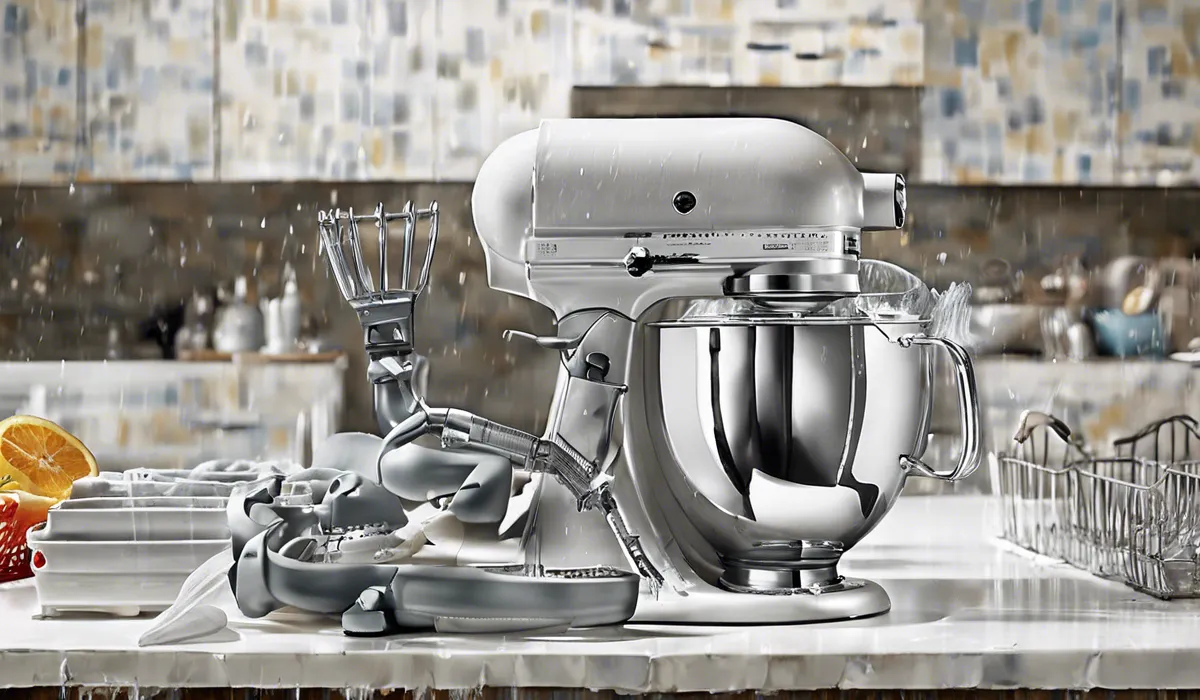How to Clean KitchenAid Dishwasher Spray Arm: Quick Guide
To clean a KitchenAid dishwasher spray arm, first remove it by unscrewing or unclipping. Rinse under warm water, then clear clogged holes with a toothpick. Soak in vinegar for a few minutes if needed. Reattach the spray arm securely after cleaning.
Step-by-Step Guide to Removing the Spray Arm

Preparation for Removal
Before beginning the process of removing the spray arm from your KitchenAid dishwasher, it is essential to ensure safety and prevent any damage to your appliance.
Start by turning off the dishwasher and unplugging it from the power source. This step is crucial to avoid electrical shocks and keep the environment safe for performing the cleaning task.
Accessing the Spray Arm
Once the dishwasher is safely turned off, gently slide out the bottom rack to make the spray arm easily accessible. Removing the rack provides the necessary space to work comfortably and prevents any obstacles from hindering the removal process.
Detaching the Spray Arm
The spray arm is typically held in place by a cap or a retaining clip. Depending on your dishwasher model, twist off the spray arm cap or carefully release the retaining clip to detach the spray arm.
It is important to handle these components gently to avoid breaking any plastic parts.
Lifting Out the Spray Arm
With the cap or clip removed, lift the spray arm out of the dishwasher. Make sure to lift it straight up to prevent any damage to the arm or the dishwasher’s base.
If there’s resistance, check for any additional securing mechanisms and consult your dishwasher’s manual for guidance.
Cleaning the Spray Arm

Rinsing with Warm Water
Begin the cleaning process by holding the spray arm under running warm water. The force of the water will help to dislodge any loose debris trapped in the spray arm holes. Ensure that the water flows through all the holes to wash away any particles.
Clearing Debris from the Holes
After rinsing, inspect each hole in the spray arm for remaining debris. Use a soft brush or toothpick to gently clear out any blockages. When doing this, take care not to damage the holes as this can affect the water flow and the dishwasher’s performance.
Dissolving Mineral Deposits with Vinegar
If you notice hard water build-up or mineral deposits, soak the spray arm in a mixture of vinegar and warm water for a few minutes.
Vinegar is a natural descaling agent and can help to dissolve these deposits without harsh chemicals. Ensure the entire spray arm is submerged for optimal cleaning.
Rinsing After Soaking
After the soak, rinse the spray arm thoroughly with warm water to remove any remaining vinegar solution and loosened deposits. Check the spray arm again to ensure all the holes are clear and that there’s no residue left from the cleaning process.
Reinstalling the Spray Arm

Inspecting the Cleanliness of the Spray Arm
Before reinstalling the spray arm, perform a final inspection to make sure that all holes are unobstructed and that the spray arm is entirely clean. Any remaining blockage can affect the dishwasher’s performance and result in poorly cleaned dishes.
Positioning the Spray Arm
Place the cleaned spray arm back into its designated position at the bottom of the dishwasher.
Ensure it fits snugly into place and that it is correctly aligned with the water supply tube or the base. Proper alignment is crucial for the spray arm to function effectively.
Securing the Spray Arm
Once in place, secure the spray arm with the previously removed cap or retaining clip.
If your dishwasher requires a twist-on cap, tighten it by hand until it is secure but do not over-tighten, as this may cause damage. For models with a clip, ensure that it snaps into place firmly.
Final Steps Before Operation
With the spray arm secured, slide the bottom rack back into the dishwasher. Plug the dishwasher back into the power source and run a short test cycle.
This cycle will help you verify that the spray arm is installed correctly and that water is being distributed evenly. Listen for any unusual sounds and check for leaks, which might indicate incorrect installation.
FAQs About Cleaning KitchenAid Dishwasher Spray Arms
How do I remove the spray arm from my KitchenAid dishwasher for cleaning?
To remove the spray arm, either unscrew or unclip it from the dishwasher, depending on the model. Consult your dishwasher’s manual if you’re unsure of the method.
What should I use to clear the holes in the dishwasher spray arm?
Use a toothpick to gently clear any debris from the clogged holes in the spray arm, taking care not to damage the holes.
Can I rinse the spray arm with any type of water?
Rinse the spray arm under warm water to help loosen any buildup or debris.
Is it necessary to soak the spray arm in vinegar, and for how long?
If the spray arm is very dirty, soak it in vinegar for a few minutes to help dissolve mineral deposits and other buildup.
How do I ensure the spray arm is securely reattached after cleaning?
After cleaning, reattach the spray arm by screwing or clipping it back into place. Make sure it is firmly secured to prevent it from coming loose during operation.
Final Thoughts
Maintaining a KitchenAid dishwasher involves periodic cleaning of the spray arm. To ensure optimal performance, remove the spray arm by unscrewing or unclipping it, then rinse it thoroughly with warm water.
Use a toothpick to dislodge debris from any clogged holes. For stubborn residue, a brief vinegar soak may be helpful. Once clean, reattach the spray arm securely to complete the maintenance.





